How To Make Your Hagia Sophia Istanbul visit Rock? Read This!
Hagia Sophia, Istanbul
Hagia Sophia is a mosque and a major cultural and historical site in Istanbul, Turkey. The Hagia Sophia that stands today was built in the 6th century as the cathedral for the capital of the Eastern Roman Empire (Byzantine Empire), and it became a mosque in 1453 with the Ottoman conquest of Constantinople. It remained a Mosque until 1935 when the Turkish government turned it into a museum. This architectural marvel is known for its Byzantine architecture, elaborate mosaics, and religious importance to both religion Christians and Muslims. The Hagia Sophia was originally built by the eastern Roman emperor Justinian I as the Christian cathedral of Constantinople between 532 and 537. It was formally Known as the Church of the Holy Wisdom and was then the world’s largest interior space.
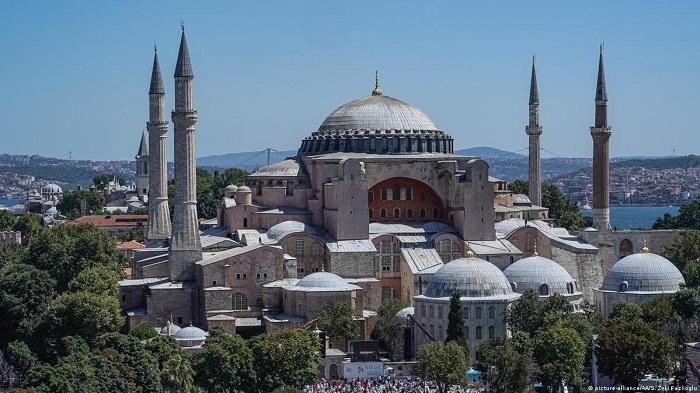
Hagia Sophia is considered the Phenomena of Byzantine architecture and is said to have changed the history of architecture. It remained the world’s largest cathedral for nearly a thousand years until Seville Cathedral was completed in 1520. After the Fall of Constantinople to the Ottoman Empire in 1453, it was converted to a mosque by Mehmed the Conqueror and became the principal mosque of Istanbul until the 1616 construction of the Sultan Ahmed Mosque. Upon its conversion, many religious structures related to Christianity were removed, and Islamic architectural additions included four minarets, a minibar, and a mihrab.
The complex remained a mosque until 1935 and was then converted into a museum by the Republic of Turkey. In July 2020 the museum and the Hagia Sophia were again reclassified as a mosque. The Hagia Sophia is a UNESCO World Heritage site and the nation’s biggest tourist attraction.
History of Hagia Sophia
Hagia Sophia is an enormous architectural marvel in Istanbul Turkey. it was initially constructed as a Christian Basilica in 532 AD. It has been one of the significant symbols of the city for more than 1500 years because of its mammoth structural presence and artisanship.
The structure has been associated with all the matters of international politics, art, architecture, and religion as well. The Hagia Sophia had also served as a mosque before it was converted into a museum displaying exhibits of the bygone times. In the initial days, the structure was built with a wooden roof after its very first commissioning. In 404 AD, it was burned down to ashes due to the riots in Constantinople and then rebuilt by the successor of Arkadious, Emperor Theodosios II in 415 AD.
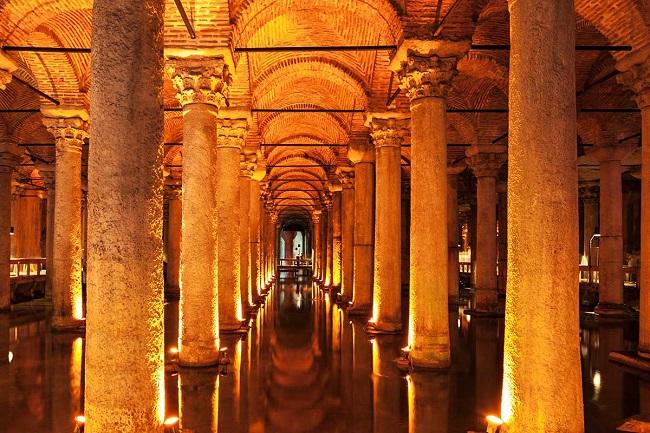
Again wooden roof was used in the second phase of construction. The reconstruction could not make it for a longer period and was subjected to fire for the second time during the Nika Revolts that kicked up against Emperor Justinian I. Justinian ordered a complete demolition of the remnants and commissioned well-known architects of that time to start the construction of the new basilica.
Hagia Sophia Architecture
Architecturally the Hagia Sophia is a popular tourist destination in the world. The monument has a traditional design with the length, width, and height of the final construction being 81 meters, 73 meters, and 54 meters, respectively. The Hagia Sophia has a large and domed roof with a semi-domed altar and porches. All the supporting arches were covered with mosaics in hexapterygons. The central dome of the monument rests on a ring of windows supported by the two semi-domes and two arches. these features are covered with intricate artworks of Christian Gospels on Mosaics, colorful stones, gold, silver, and glass.
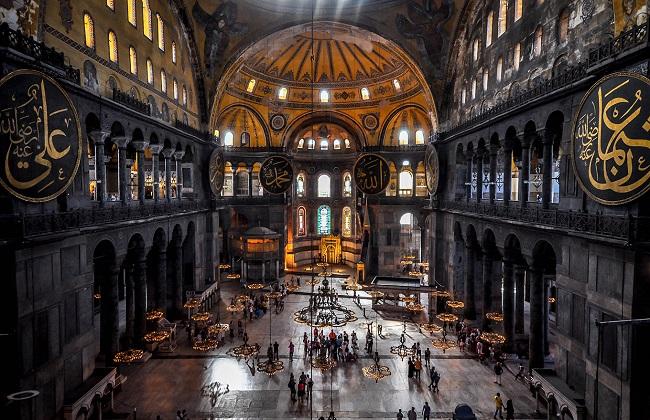
Justinian I, the ruler ordered the provinces under his rule to send some architectural work for use in the construction so that the cathedral has influences of the Byzantine Empire. The marble that was used to make the floor of the cathedral was bought from Anatolia and the bricks were bought from North Africa. The 104 Columns of the monument were imported from the Temple of Artemis in Ephesus and Egypt.
Artworks in Hagia Sophia
All the interior walls are decorated with mosaics with various dimensions to make out different forms of figures and artistic motifs. Most of the artworks are considered to be masterpieces even at present and stand as a testimony, Most of the motifs display religious images of Jesus Christ. Hagia Sophia is also decorated with various types of marble rock sourced from various parts of the Byzantine Empire. Marble rock was also used in a significant part of the construction. One of the most adored parts of the Hagia Sophia monument is the two round jars made up of marble on each side of the entrance. These jars were used as a part of religious rituals.
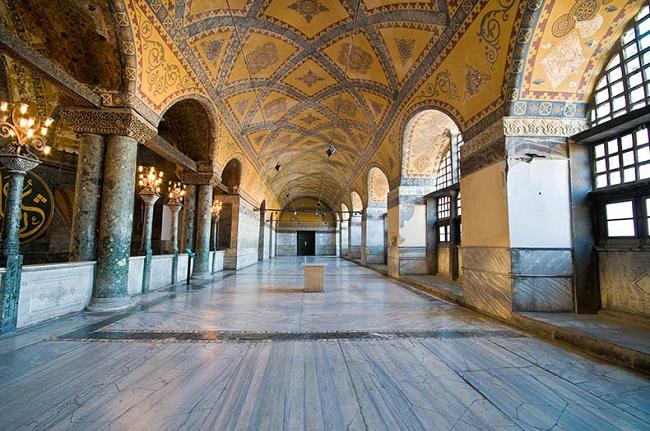
A place to visit in Istanbul
Dolmabahce Palace, Istanbul
Constructed in the Ottoman area Dolmabahce Palace leaves everyone in awe. The attraction holds a significant place in Turkey and was built by an Armenian architect, Garabet Amira Balyan, which is a combination of European architectural styles. It has 43 halls and 285 rooms which makes this palace a must-visit attraction in Istanbul. Dolmabahce Palace is a luxuriant villa in Istanbul positioned along the picturesque European shore of the Bosphorus Strait. This majestic imperial villa is the true emblem of Ottoman architectural figures.
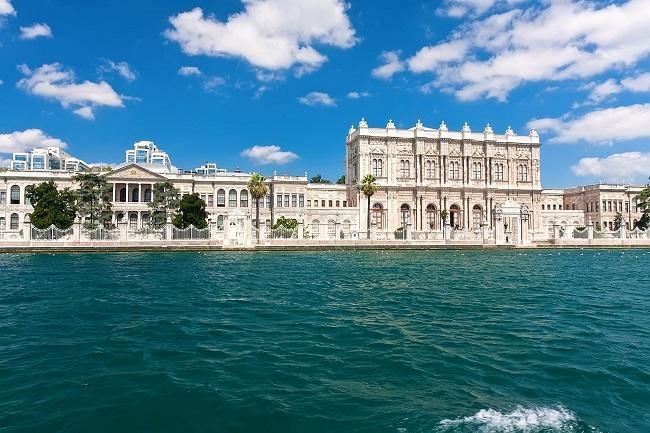
Topkapi Palace, Istanbul
Topkapi Palace is a vibrant and picturesque grandeur of the erstwhile Ottoman Empire of Turkey. It literally meant “Cannon Gate” in Turkish and was built in 1459 by Sultan Mehmed. It was of great importance in the 15th and 16th centuries when it was used by the Sultan and his bevy of concubines. The Imperial Harem is one of the top tourist attractions in Istanbul. The lesser-known items like armor, clothing, and manuscripts found here date back to the 15th and 16th centuries. On account of its age, beauty, and the volumes it tells us about the lives of the sultans of the Ottoman empire, it has been recognized as a UNESCO World Heritage Site.
Also, read- Fall in Love with These Magical Christmas Destinations in 2022
The Galata Tower, Istanbul
The tower has nine stories and is 66.90 m high. It was the city’s tallest structure when it was built. Located close to the main junction of the Bosphorus and the Golden Horn, it is the ideal place to see Istanbul’s peninsula and the surrounding scenic feature.
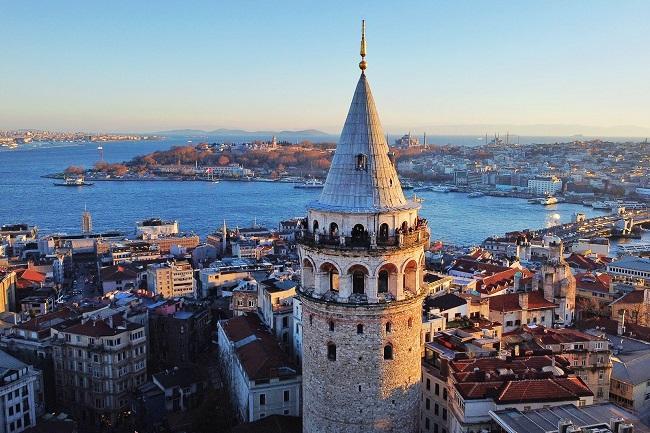
How To Reach
Every year thousands of people all over the world visit this place for its religious and historic significance. The climate of this place remains favorable throughout the year. Hagia Sophia is located at a distance of 48 km from Istanbul airport and it takes about 35-45 minutes to cover the distance by car, or private taxi.
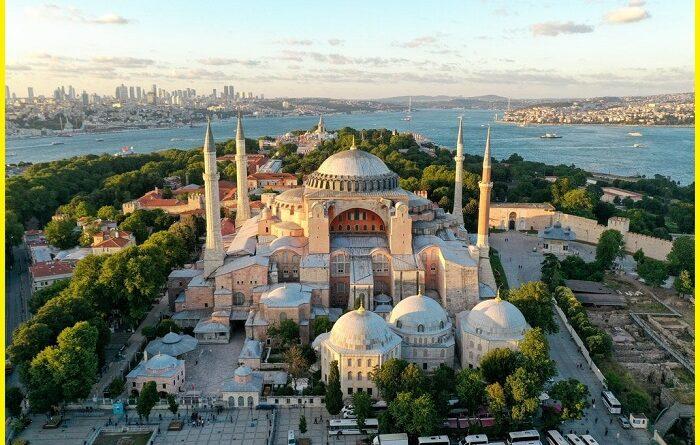
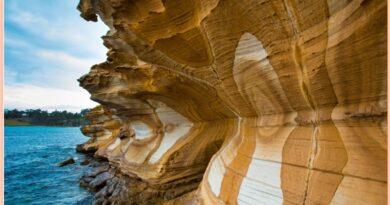


Pingback: The Turquoise Oludeniz Blue Lagoon-Turkey's Famous Beach site - Geotourism